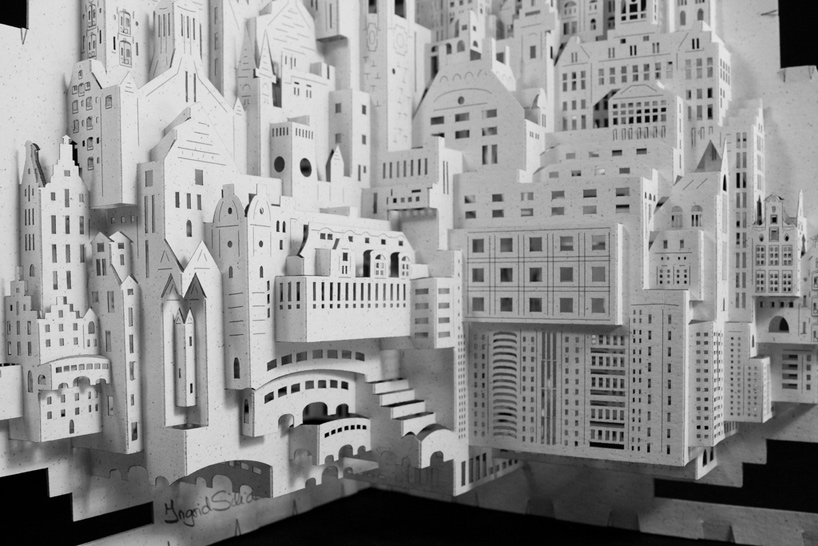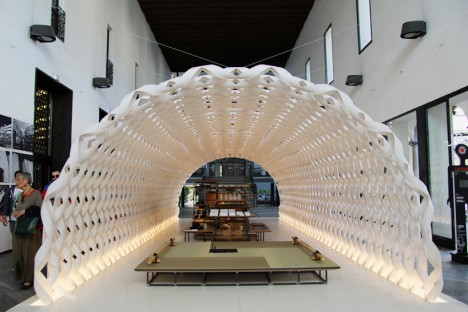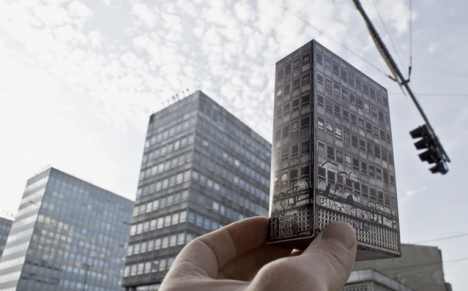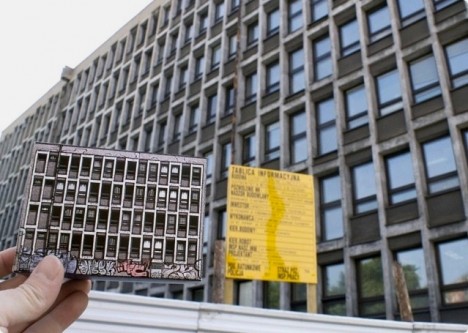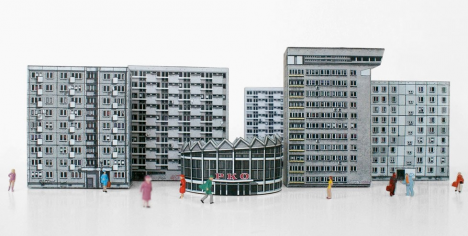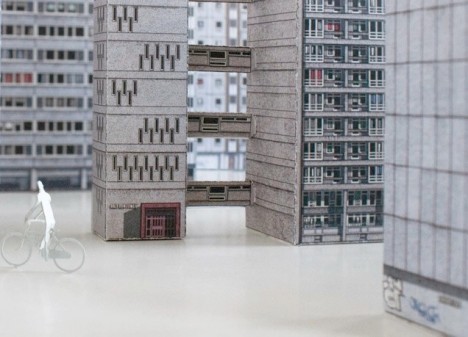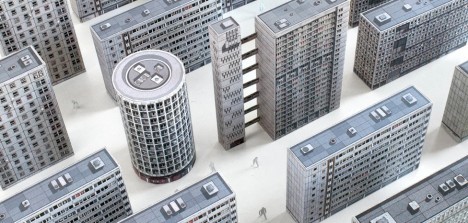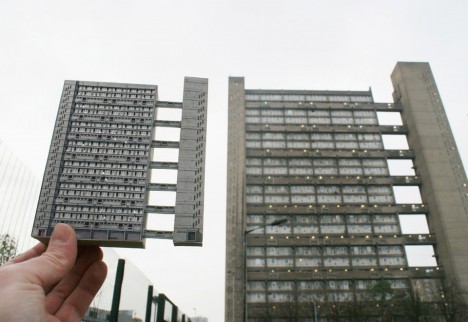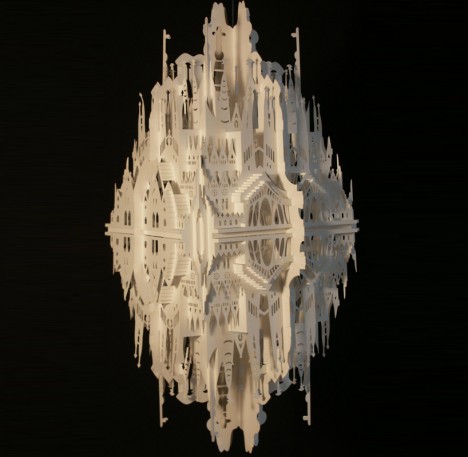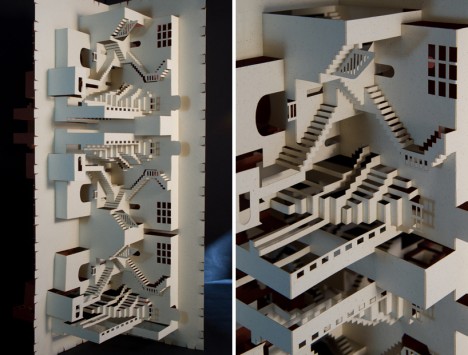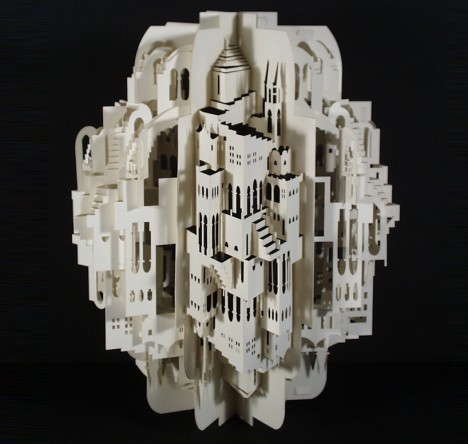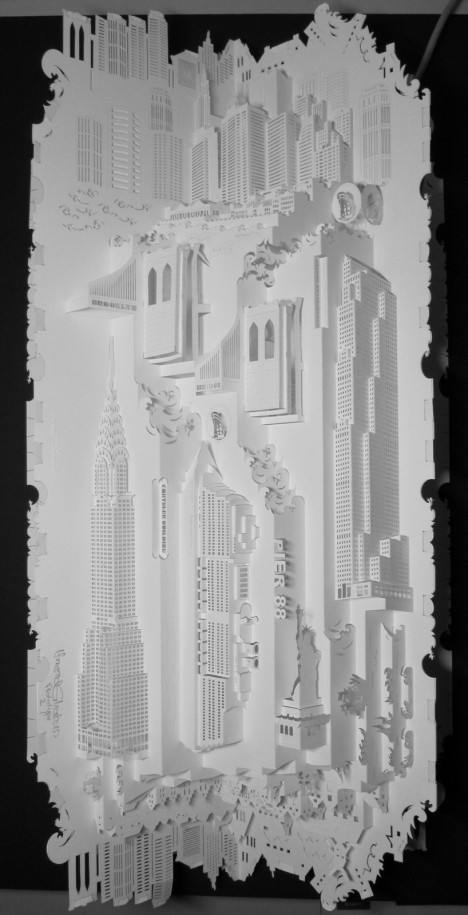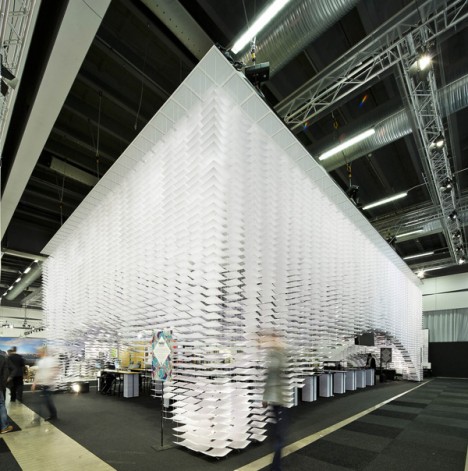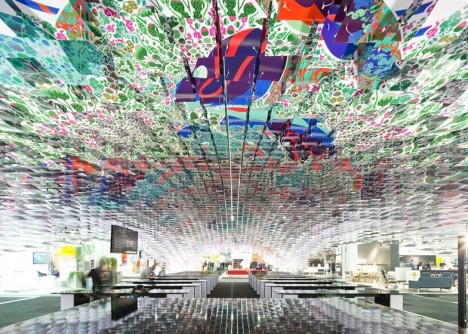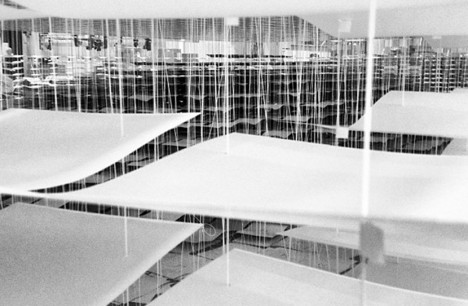A study in opposites, paper architecture renders what is normally solid and durable in delicate, temporary form, whether recreating intricate silhouettes of miniature cities or building full-scale pavilions, tunnels and other installations. Spires, translucent windows, infinite staircases and undulating ceilings come to life in these 27 works of paper cut sculpture.
Irori Pavilion by Kengo Kuma
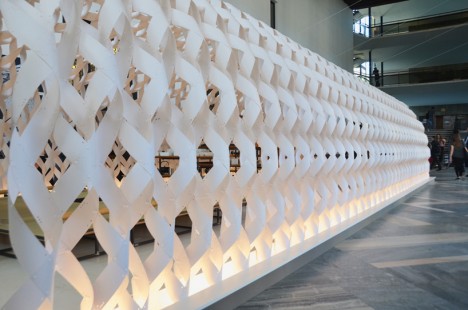
Best known for innovative timber structures, Japanese architect Kengo Kuma applies his signature blend of traditional joinery and modern shapes to a new material for Milan Design Week 2015. Kumar collaborated with Kitchenhouse to create ‘Irori,’ a paper pavilion arching over a contemporary kitchen space. Envisioned as a white cocoon, the structure is made of vulcanized paper, which has more strength than regular paper but maintains its softness.
Paper Miniatures of Modernist Architecture by Zupagrafika
Polish design collective Zupagrafika creates paper cut-outs of modernist buildings found in the city of Poznan and Warsaw as well as London’s divisive concrete Brutalist architecture. Rendered in minute detail down to the graffiti that was found on the buildings at the time of study, the cutouts come in flat form so you can put them together yourself and create little cities. Individual cut-outs are under 5 Euros each.
Intricate 3D Paper Architecture by Ingrid Siliakus
Master paper artist Ingrid Siliakus creates fantasy cities replete with mirror-image towers, arches, spires, stacks upon stacks of skyscrapers and stairs that go nowhere in particular. The Amsterdam-based artist creates an incredible 20-30 prototypes before completing each piece, adding one layer after another of cut and folded paper to the finished product until she deems it done.
Stockholm Pavilion by Kustaa Saksi and Gert Wingårdh
Built for the 2013 Stockholm Furniture & Light Fair, the Stockholm Pavilion by artist Kustaa Saksi and architect Gert Wingårdh is made up of 11,000 illustrated sheets of paper. From the sides, the installation looks like it’s solid white, but step under it and look up to see the colorful patterns emerge.
